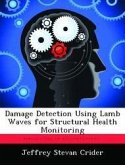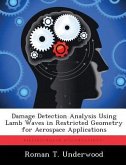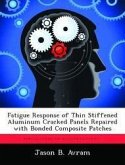Structural health monitoring (SHM) is an emerging technology that can be used to identify, locate and quantify structural damages before failure. Among SHM techniques, Lamb waves have become widely used since they can cover large areas from one single location. Due to the development of various structural simulation programs, there is increasing interest in whether SHM data obtained from the simulation can be verified by experimentation. The objective of this thesis is to determine Lamb wave responses using SHM models in ABAQUS CAE (a Finite Element Analysis (FEA) program). These results are then compared to experimental results and theoretical predictions under isothermal and thermal gradient conditions in order to assess the sensitivity of piezo-generated Lamb wave propagation. Simulations of isothermal tests are conducted over a temperature range of 0-190-F with 100kHz and 300kHz excitation signal frequencies. The changes in temperature-dependent material properties are correlated to measurable differences in the response signal's waveform and propagation speed.
Bitte wählen Sie Ihr Anliegen aus.
Rechnungen
Retourenschein anfordern
Bestellstatus
Storno









